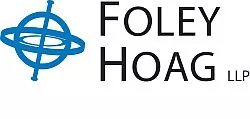- within Media, Telecoms, IT, Entertainment and Tax topic(s)
Trademarks are crucial assets for robotics companies, helping them establish and maintain a distinctive brand identity. In a competitive industry driven by technological advancements, trademarks protect names, logos, slogans, and other identifiers that distinguish a company's products and services. A well-managed trademark strategy fosters customer loyalty, reinforces brand reputation, and prevents competitors from capitalizing on confusingly similar marks.
One notable example is Boston Dynamics, a leader in advanced robotics, which has strategically used trademarks to build its brand. Boston Dynamics owns trademarks for the names of its iconic robots, including "SPOT" (U.S. Trademark Registration No. 5998806), the agile quadruped robot, and "ATLAS" (U.S. Trademark Registration No. 4851798), its humanoid robot designed for dynamic movements and complex tasks. These trademarks have come to indicate innovation, reliability, and cutting-edge engineering, enhancing the company's reputation in the robotics market. The distinctiveness of these names and their association with pioneering technology help Boston Dynamics maintain a competitive edge.
In addition to trademarks for specific robots, Boston Dynamics has protected its core identity "BOSTON DYNAMICS" (U.S. Trademark Registration No. 5811310), as well as its corporate logo, featuring a stylized depiction of a robot in motion (U.S. Trademark Registration No. 5461218). This visual identity strengthens brand recognition, creating an immediate connection between the logo and the company's innovative ethos. By investing in trademarks for both product-specific and corporate-level branding, Boston Dynamics has built a robust framework to safeguard its market position.
However, building and protecting trademarks is not without challenges. Companies must create marks that are both distinctive and relevant to their offerings. Descriptive terms, such as "SmartBot," may face registration challenges due to their lack of distinctiveness, as they directly describe the product's function or features. The United States Patent and Trademark Office (USPTO) and equivalent international bodies often require evidence that such marks have acquired distinctiveness through extensive use before they will recognize such terms as protectable and registrable trademarks.
International trademark protection adds another layer of complexity. For robotics companies operating globally, differing trademark laws and the potential for conflicts with pre-existing marks in target markets must be addressed. For example, a trademark that faces no opposition in the United States may conflict with an existing registration in Europe or Asia, necessitating rebranding or renegotiation. To prevent such setbacks, comprehensive clearance searches should be conducted before filing trademark applications.
Global robotics companies often use the Madrid System for the International Registration of Marks (AKA the "Madrid Protocol") to streamline the process of obtaining trademark protection in multiple jurisdictions. This system simplifies the process, enabling companies to manage trademark portfolios more efficiently and for lower costs, though comes with numerous disadvantages that companies must carefully consider. A consistent approach to branding across markets, including the use of unified names and logos, reinforces customer trust and loyalty.
Trademark vigilance plays a critical role in preventing brand harm. Companies must actively monitor their trademarks and enforce their rights against unauthorized use. For example, using trademark watch services can alert companies to potential infringements, such as counterfeit products or competitors using or applying to register confusingly similar names. Swift action to address these issues helps maintain brand integrity and market position.
Domain names and social media handles are an extension of a company's trademark strategy. In the digital age, securing these assets is essential to avoid cybersquatting or misuse by third parties. Companies like Boston Dynamics and iRobot have ensured that their trademarks are reflected in their online presence, enhancing customer accessibility and reinforcing brand identity.
In conclusion, trademarks are more than just legal protections—they are strategic assets that underpin a robotics company's identity and market presence. By developing distinctive marks, conducting thorough clearance searches, adopting a global protection strategy, and actively monitoring and enforcing their rights, robotics companies can establish a strong brand foundation. This approach not only differentiates them in a crowded market but also builds customer trust, paving the way for long-term success in the rapidly evolving robotics industry.
Originally published by MTLC.
The content of this article is intended to provide a general guide to the subject matter. Specialist advice should be sought about your specific circumstances.



